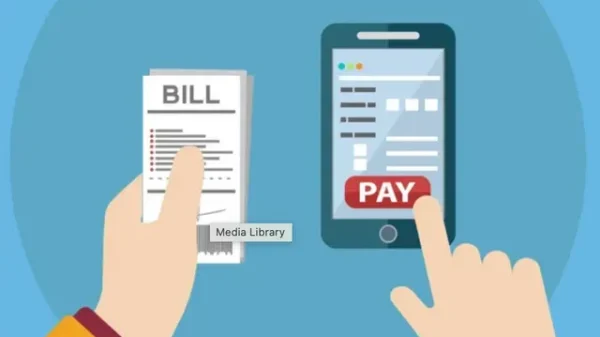It’s no secret that web applications are one of the most targeted types of applications out there. Why? Because they tend to hold a lot of sensitive data, and attackers know that they can earn a lot of money by exploiting vulnerabilities in these applications.
Here, we’ll be taking a look at how you can secure your web applications using the latest security tools and technologies. We’ll also be discussing the various types of attacks that could target your web application, as well as some tips on how you can prevent them from happening. So read on to learn all about Appsealing!
What Is Application Security?
Application security is a process that protects web applications from unauthorized access, use, or disclosure. It’s important to make sure your web applications are secure, as security breaches can lead to data loss, identity theft, and other security vulnerabilities.
To achieve application security, you need to install and configure security protection components. Once security protection is in place, testing is essential to ensure successful completion of the application security program.
You can select an approach that meets your specific needs and budget. Don’t be afraid to experiment to find the right solution for you. So, let’s take a look at what application security is and some of the ways to achieve security.
Tips For Securing Web Applications
Web applications can be a valuable source of business, but they need to be protected from unauthorized access. There are a number of measures you can take to secure your web applications, and this guide will teach you everything you need to know.
First and foremost, always use a password manager to keep your passwords secure and encrypted. Next, be proactive about security. Don’t wait until there’s a problem to take steps to fix it! Use strong authentication measures like two-factor authentication (2FA).
And last but not least, keep track of all changes made to your applications and make sure no one has access without authorization. By following these tips, you can ensure that your web applications are safe and secure.
Types Of Attacks On Web Applications
Web application security is a top priority for businesses of all sizes. It’s not just about protecting your website from attack – it’s also about protecting your data and customers’ privacy. Here, we’ll be discussing the four most common web application attacks, and how to secure your web applications against them.
Cross-site scripting (XSS), injection attacks, unauthorized access, and data theft are the most common attacks, and understanding how to protect against them is essential for web application security. We’ll be providing a step-by-step guide on how to secure your web applications against these attacks, so make sure to read on!
Cross-Site Scripting (XSS)
Cross-Site Scripting (XSS) is a type of attack that allows attackers to inject malicious code into web pages, thus hijacking user sessions. This can be very harmful as it enables the attacker to do anything they like with the victim’s data – including stealing sensitive information or even executing arbitrary code in the victim’s browser.
To prevent XSS attacks, you need to take measures such as authentication and session management features and keep an eye on your applications for security vulnerabilities. Apart from this, make sure you know how to identify and avoid common XSS traps.
Security Misconfiguration
One of the most common security breaches is web applications that are poorly configured. This often leads to users’ data being stolen or their credentials being compromised. To keep your application secure, make sure you use strong authentication and proper firewalls.
Additionally, take regular measures to check for updates and patches that might fix vulnerabilities in your application. If possible, encrypt sensitive data using encryption tools like HTTPS Everywhere or SFTP client software.
Finally, be aware of credential theft –especially when it comes to social media accounts- as well as data theft and SQL injection attacks which can easily compromise user information.
Injection Vulnerabilities
Injection vulnerabilities are one of the most common web application security issues. They allow attackers to inject malicious code into the application, which can then be executed by the user. SQL injection and XSS attacks are two common types of injection vulnerabilities.
Cross-Site Request Forgery (CSRF) is another type of attack that exploits flaws in web applications that allow an attacker to perform actions on behalf of a victim without their knowledge or consent.
To protect yourself from these attacks, use secure coding practices and make sure your application is patched with the latest security updates from vendors. Additionally, you can prevent such attacks by ensuring that input fields are properly validated before they’re accessed by users.
Application Security Risks
Web application security is a top priority for businesses of all sizes. The risks involved are significant, and if not taken care of, can have serious consequences. That’s why it’s important to understand the web application security risks and implement appropriate measures.
The best way to achieve application security is by using a secured password, regularly reviewing applications for vulnerabilities, and taking other preventative measures like firewalls and intrusion detection software. Make sure to stay up-to-date on the latest security threats, so you can stay protected against web application vulnerabilities.
Tools And Technologies For Application Security
It’s no secret that web application security is one of the top concerns for businesses today. That’s why securing your web applications is so important. Thankfully, there are a variety of tools and technologies you can use to help you achieve this goal.
One of the best tools you can use is a VPN. By using a VPN, you’re able to protect your sensitive data from being snooped on by third-party hackers. Additionally, make sure you use the right tool for the job – not all security measures are created equal.
That’s why it’s important to test out security measures before deploying them on your website or server. Additionally, regular application security audits will help you ensure that your data is always safe. So, go ahead and secure your web applications – it won’t take long and it will definitely protect your business.
Keep Logs And Monitoring Information
One of the most important steps you can take to protect yourself from web-based attacks and data breaches is to keep logs and monitoring information. This will help you identify any unauthorized or suspicious activity quickly, so that you can take appropriate measures.
You should also use encryption on your website in order to protect your data from being accessed by third parties.
Additionally, make sure that your application security is up to par by using firewalls, intrusion detection systems (IDSs), and other security measures. Finally, monitor the online behavior of your customers through cookies and Web beacons so that you can identify potential threats early on.
Harden User Authentication Mechanisms
Keeping user authentication mechanisms strong and effective is essential to safeguarding web application security. By doing so, you can protect your users’ data as well as their online identities. It’s also important to educate your users about security risks and make sure they understand how best to use the system.
This will help them make informed choices and avoid any careless actions that could jeopardize their data or security profile. You should also keep an eye on changes in application functionality and apply the latest patches for enhanced protection against vulnerabilities.
Conclusion
It’s no secret that the internet is a dangerous place. By knowing the basics of application security, you can protect your web applications from various types of attacks. Here, we will discuss the different tools and technologies that can help you secure your web applications. Make sure to read through the article to learn everything you need to protect your web applications!




































